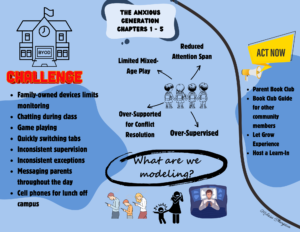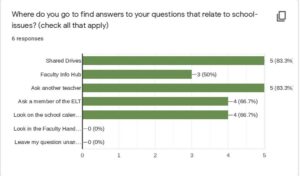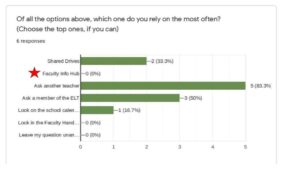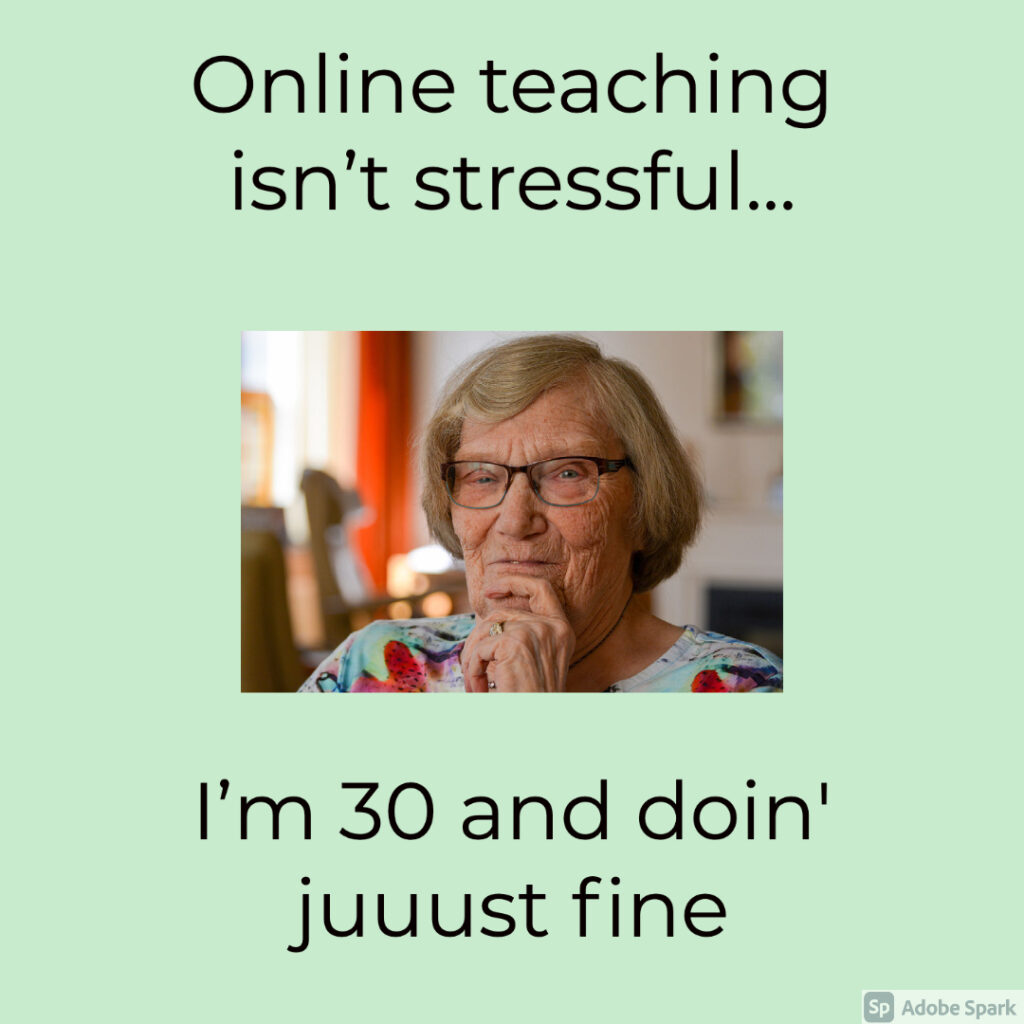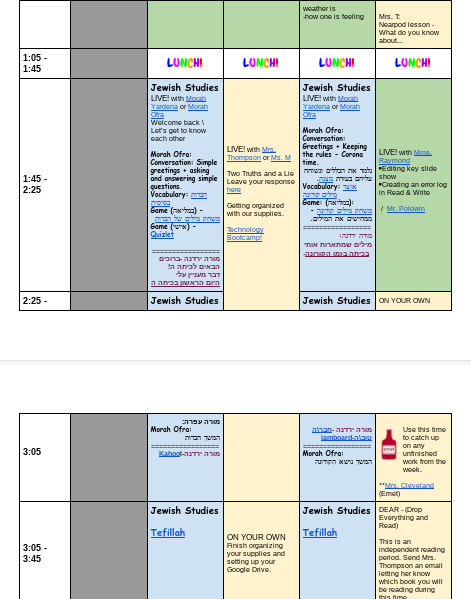If you followed any educators on social media over the last year, you would have seen MANY posts advising teachers to “let go” during this crazy COVID year. Let go of trying to teach online exactly the way you would in person; let go of standardized testing; let go of the pressure you put on yourself, be ok with being ok…
I’ve been slightly embarrassed to admit publicly that these memes didn’t always resonate with me. Switching to a hybrid/hyflex/concurrent model wasn’t easy…but it excited me! COVID scares the $%@& out of me, but for some reason, it didn’t debilitate me at work. I didn’t want to stop working, I didn’t want to stop creating, I didn’t want to stop exploring and learning and improving what I was doing and sharing with my colleagues. Was there something wrong with me? If so many people were expressing these emotions online and many of my colleagues were sharing similar emotions in school, clearly I must be the one who was missing something.
This was quite uncomfortable for me for a while. I kept finding myself teetering between conflicting emotions. I wanted to be sympathetic and supportive of those who were responding differently than me, but there were times when I also felt frustrated. This is our job! Actually, this is our profession. Being a teacher isn’t a clock-in/clock-out type of job. We are professionals, and we have students who are looking to us to support, guide and teach* them.
* I’d like to specify that teaching students during a pandemic doesn’t necessarily mean checking off all the curricular outcomes. As a teacher in a private school, we have somewhat of the luxury of focusing in on what we think is the most important right now, and adapting what and how we teach to help students work through their own emotions. Being honest and transparent with your students is OK!
On one hand, I feel like we’ve passed the point of responding to COVID as an emergency, and need to pivot towards a new normal. But on the other, the pandemic is not yet under control, and as we begin to wind down on our school year, COVID is ramping up in Ontario! As schools in the US start to re-open for in-person learning, our school has just switched to distance learning again, along with all schools in Ontario.
During one of our Educational Leadership Team meetings, my Head of School, Jon Mitzmacher, raised the discussion of trauma reactions, outlining that there are typically two opposite reactions to trauma — dissociative, passive and withdrawn on one end, and vigilant, hyper-aroused and hyper-resilient on the other. He also shared an excerpt from an episode with Brené Brown where she discusses a similar concept, that when faced with anxiety, people either over- or underfunction.
Well that explains it! When faced with the anxiety and stress of COVID, I’ve mostly responded by being an overfunctioner. As I continued to reflect, I realized that in my own way, I too have been choosing (slash been forced) to “let go” of certain things all year long. Both professionally and personally, there have been things that have been beyond my control, and I have been trying hard to practice the mindset that everything happens for a reason, and to trust the journey.
One of the hardest things I had to let go of this year was the teaching portion of my portfolio. For personal reasons, I was not able to consistently teach in person in the classroom, and needed to work from home for extended periods of time, multiple times throughout the year. At first, I was able to teach virtually while a supply teacher supervised and supported the students in the classroom. This was an invaluable experience, as it helped me empathise with my students who were learning from home on a full-time basis. I understood what it felt like to be sitting online waiting for the rest of the class to join the Meet. I understood the frustration of something being shown on the screen in the classroom that wasn’t shared online. I understood the challenge of not always hearing the questions or discussions being had by the students in the room. When I returned to school, I was able to pay attention to these things to better accommodate the students who were at home. Additionally, I was able to share this experience with my colleagues so they could better support their students as well. Beginning in February though, it was no longer feasible for me to continue teaching from home, and it became increasingly challenging for the students to adjust and adapt to different supply teachers. For the first time in 15 years, I made the difficult decision to take a leave from teaching. I have always thought about what is best for my students, and under these circumstances, this was the best choice for them and for me. In the meantime, I’ve been able to continue working part-time from home (let’s be real, when is a part-time job actually a part-time job in education?), focusing on my role as Teaching and Learning Coordinator
One challenge I’ve had as the Teaching and Learning Coordinator, even pre-COVID, was getting my colleagues to work with me more regularly. Jon and I have had many conversations about this…Should it be mandatory for teachers to meet with me? Should I reach out to them? Should they reach out to me? With all the experience Jon has had with this in all the schools he’s worked in, he shared that no matter the official setup, the challenge seems to remain the same. I expected that with the changes our teachers were facing with the introduction of hyflex learning, I would be busy meeting, brainstorming and collaborating with teachers. In reality, the stress levels have been so high, that often another meeting is seen as an added stressor, not as a welcomed support.
So what did I do? I tried my best to let go of the notion that meetings were the best way for me to support my colleagues, and used my PGP as Network Weaver to collect, connect, and create resources for teachers that they could access and use in their own time. More recently, I have created two resources specifically for teachers at my school to help them easily access the tips and tools I have shared. Each week, I send out a “Weekly Roundup” within our faculty bulletin, sharing links to things or people I have discovered that I feel would be interesting or beneficial to the teachers. As the weeks went on and the collection of resources grew, teachers started asking me to remind them about a resource I shared, and suggested I create a landing spot for everything. From this feedback, the two resources were born.
The first is a Digital Resource Directory, housed on our Faculty Info Hub (a private site just for teachers, otherwise I would link to it here) where teachers can easily see all the different tech tools and apps that are being used in the school. I was inspired by Becky Lim, who created a similar resource for teachers in her district. All the apps are organized into different categories, are linked to their website, and have a brief explanation of what the tool can be used for when you hover over it (watch the video below for a sample). Teachers themselves are always discovering new tools, therefore, we also added a section at the bottom where teachers can suggest an app that should be included, or request a tutorial that should be made.
I then took all my Weekly Roundups and added another page to our Faculty Info Hub, where teachers could easily find all my posts in one spot.
Slowly but surely, teachers have been reaching out to make meetings with me for support. I have let go of the notion that I need to meet with ALL teachers in order to be successful. I am highly enjoying the time I spend with those I do meet with. Some teachers ask for meetings. Others ask for help finding resources.


I always get excited when a teacher asks a question, and I’m able to send them a link to one of our tutorials that are housed on the Info Hub.
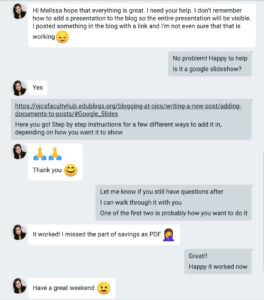
This year more than ever, each time I meet with one of my colleagues, I get that excited feeling you get after attending an amazing conference session…that feeling of excitement and invigoration, itching to get into the classroom to try something new to see how it goes. We have so much to gain by sharing with others. It’s my hope that the more I work with some teachers, through the grapevine, others will start to hear and be inspired to reach out as well.
